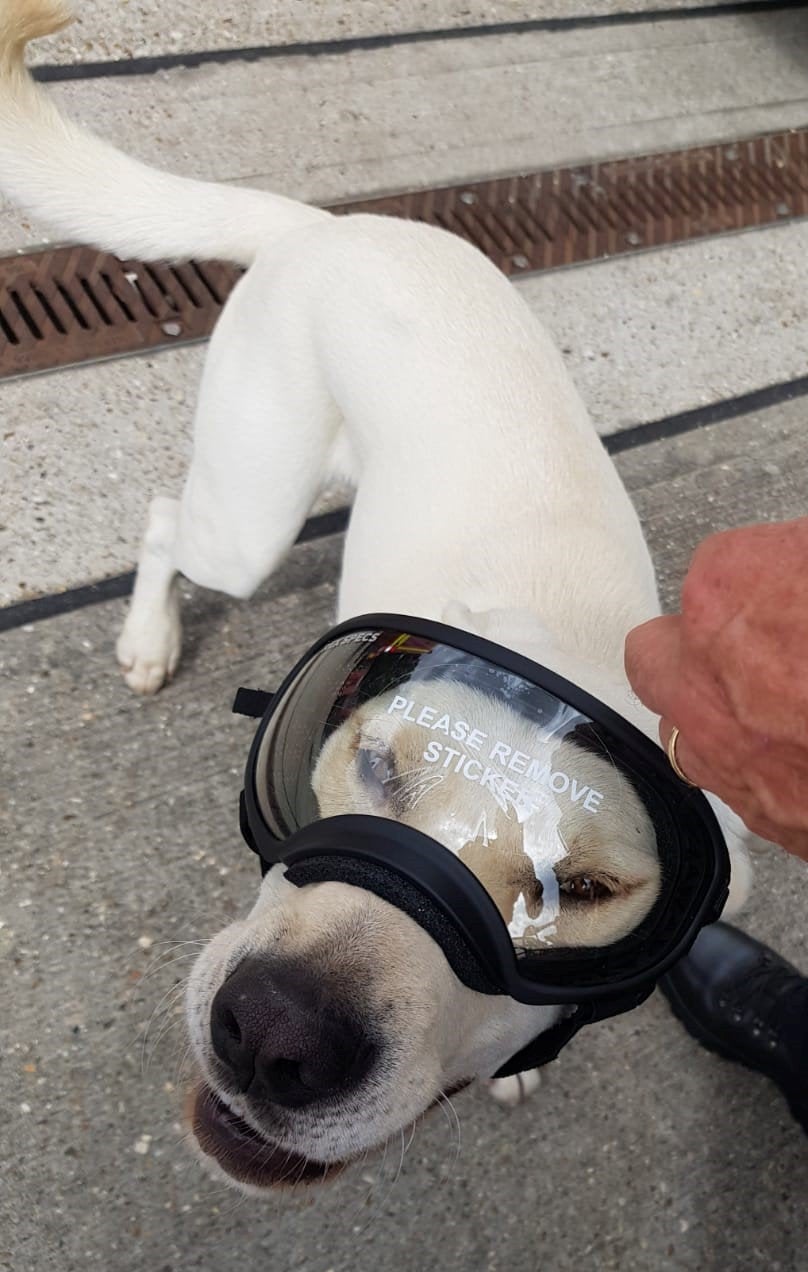
Homeless Bailey was brought into Dogs Trust Loughborough and it was feared he might be a lost cause
(Picture: ECFRS / SWNS)A stray Labrador deemed “unruly, untrainable, unsociable, rude and stubborn” has proven everyone wrong to become an unlikely expert fire service search dog.
Homeless Bailey was brought into Dogs Trust, Loughborough and it was feared he might be a lost cause.
But when rescuers noticed his talent for finding hidden toys, they put a shout out to emergency services to see if anyone needed a new rescue dog.
Bailey was put to the test by Essex County Fire and Rescue Service and within days he was recruited to the team.
Handler Graham Currie described the fearless pooch, who is still training, as a total natural and said he was as nimble as a mountain goat.
It’s unusual for a Labrador – rather than a springer or a cocker – to be used as a rescue dog, because they are often too greedy and food driven for the job.
Bailey will be one of just 20 dogs used by Urban Search and Rescue (USAR) teams in the UK to help find and rescue trapped or lost people in emergency situations.
He will also be part of UK International Search and Rescue (UKISAR), attending disaster zones across the globe, once he is fully trained.
Graham said: “After testing Bailey’s drive for a tennis ball and checking he had no aggression towards other dogs or people, I offered to take him on a six-week trial.

“The biggest thing was getting him in the van because he associated it with being taken to a compound, but within 24 hours he was taught to associate it with fun.
“By the third day, I was 95 per cent sure he was the one.
“In the vehicle barn, there was rugby ball on a ledge above the gym weights and he wouldn’t give up until he got it – that’s the kind of determination we are looking for in a search dog.
“I was reluctant to take a Labrador as they can be greedy and distracted with food, and I was looking for a springer, cocker or sprocker spaniel bitch because I’ve found they are less stubborn and easier to train.
“Bailey has got that drive though and he’s not greedy, he’d take a ball over a bowl of food every time.”
Louise Crawford, animal welfare scheme co-ordinator at Dogs Trust, contacted UKISAR to ask if anyone was looking for a new search dog.
Graham is planning ahead and training Bailey to take over from Jarvis, an eight-year-old cocker spaniel, a live scent search dog for the service, when the dog retires.
He said Bailey, who is 18 months to two years old, has excelled at search and rescue activities. He has completed seven days of UKISAR training in buildings and rubble piles with police and national assessors.
Graham said: “To start with, we were hiding tennis balls to see if he would find them without being scared of the rubble.
“He is one of the most natural search dogs I’ve ever seen - he’s like a mountain goat! Nothing fazes him, he has no fears or phobias.
“A police trainer and colleague said if we could clone this dog all our problems would be solved.
“He was described as unruly, untrainable, unsociable, rude and stubborn.
“But a dog that cost us £185 has has turned out to be the most incredible creature.”
It usually takes 18 months to three years to train a dog but Bailey, whose nickname is the Polar Bear, because of his size, could be working as early as next April.
Graham said: “He’s already doing ‘blind searching’, using his nose to find people.
“He searches buildings so methodically; he’ll go in the first door in the building or corridor, check all the rooms attached to it and go back to the corridor and do the same on the next door, and so on.”
Graham has three other dogs - Jarvis, rescue cocker spaniel Fizz, and Ailith, a 12-and-a-half-year-old springer spaniel who came from the Scottish Highlands.
She is a pet but has been taught to do basic searching.
Graham, who is based at ECFRS’s USAR site in Lexden, Colchester, said: “We’ve landed on our feet with Bailey – and so has he, because he has a lovely home now. We are super proud.”
Louise Crawford, Dogs Trust’s animal welfare scheme co-ordinator, said she spotted Bailey’s “fantastic” potential and is delighted to see he is so happy.







